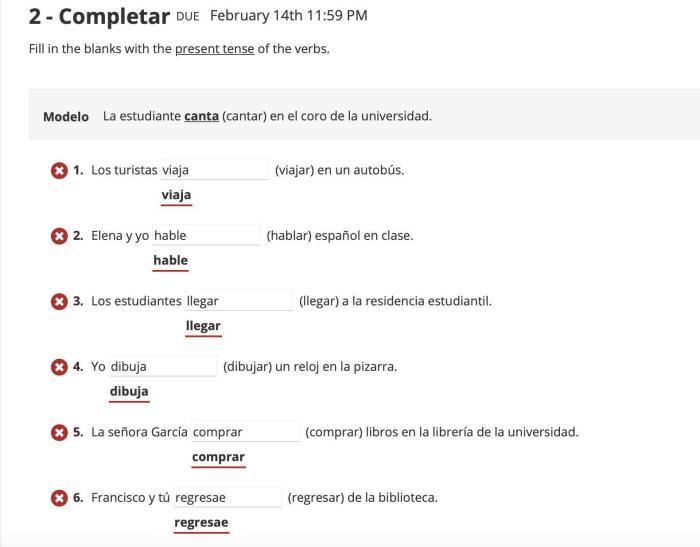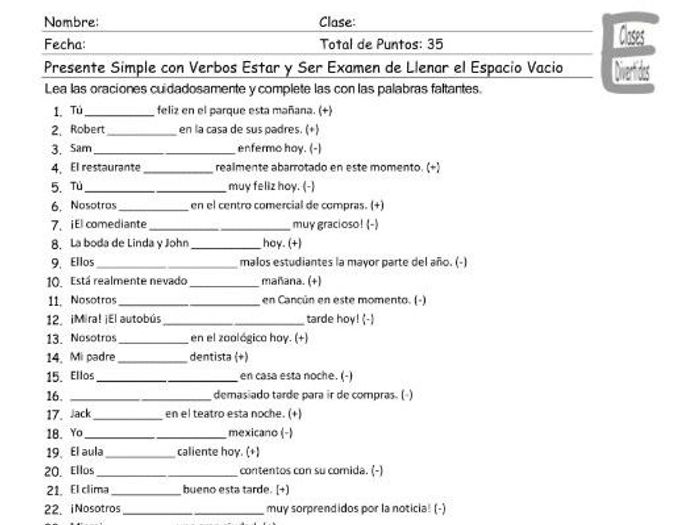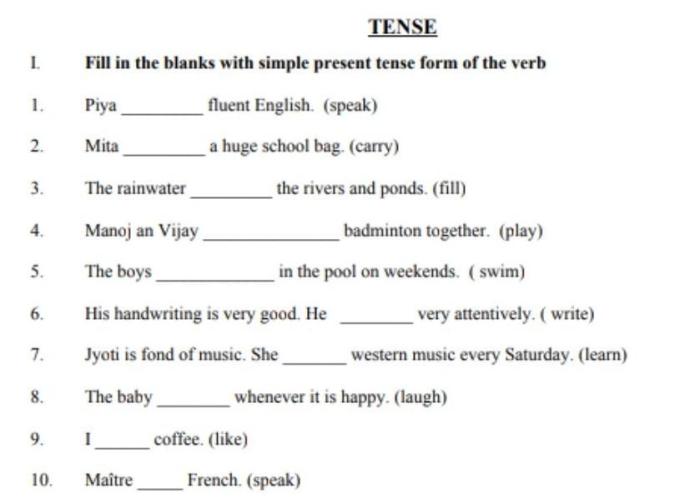Fill in the blanks with the present tense of estar. – Fill in the blanks with the present tense of estar, a fundamental aspect of Spanish grammar, opens the door to a comprehensive understanding of the language. Mastering its conjugation and usage empowers learners to express location, temporary states, comparisons, and more with precision and fluency.
This guide delves into the intricacies of estar, providing a structured approach to its conjugation, application, and advanced uses. Through a series of clear explanations and illustrative examples, learners will gain a thorough grasp of this versatile verb and its ability to enhance their Spanish communication skills.
Present Tense Conjugation of ‘Estar’

Estar, meaning “to be” in English, is a Spanish verb that describes the location or state of being of a subject. In the present tense, ‘estar’ is conjugated as follows:
| Subject Pronoun | Verb Conjugation | English Translation |
|---|---|---|
| yo | estoy | I am |
| tú | estás | You (informal) are |
| él/ella/usted | está | He/she/you (formal) is |
| nosotros/nosotras | estamos | We are |
| vosotros/vosotras | estáis | You (plural, informal) are |
| ellos/ellas/ustedes | están | They/you (plural, formal) are |
Using ‘Estar’ to Describe Locations

Estar is commonly used to indicate the location of people, objects, and events. For example:
- Yo estoy en la casa. (I am in the house.)
- El libro está sobre la mesa. (The book is on the table.)
- La fiesta está en el parque. (The party is in the park.)
‘Estar’ with Adjectives

Estar can also be used with adjectives to describe temporary states or conditions. For example:
- Estoy feliz. (I am happy.)
- Tú estás cansado. (You (informal) are tired.)
- La comida está deliciosa. (The food is delicious.)
‘Estar’ with Prepositional Phrases

Estar can be used with prepositional phrases to indicate specific locations or situations. For example:
- Estoy debajo de la mesa. (I am under the table.)
- El libro está delante de mí. (The book is in front of me.)
- La fiesta está cerca de la playa. (The party is near the beach.)
‘Estar’ in Comparisons
Estar can be used in comparisons to indicate a state or condition relative to another. For example:
- Yo estoy más feliz que tú. (I am happier than you.)
- El libro está más interesante que la película. (The book is more interesting than the movie.)
- La comida está más cara que el año pasado. (The food is more expensive than last year.)
Advanced Usage of ‘Estar’
Estar has more advanced uses, such as in idiomatic expressions and figurative language. For example:
- Estoy en las nubes. (I am in the clouds.) – Idiomatic expression meaning “to be happy or dreamy”
- El tiempo está volando. (Time is flying.) – Figurative expression meaning “time is passing quickly”
FAQ Explained: Fill In The Blanks With The Present Tense Of Estar.
What is the present tense of estar?
The present tense of estar is used to describe ongoing actions, states of being, or locations in the present moment.
How do I conjugate estar in the present tense?
The conjugation of estar in the present tense is as follows: yo estoy, tú estás, él/ella/usted está, nosotros/nosotras estamos, vosotros/vosotras estáis, ellos/ellas/ustedes están.
Can estar be used to describe permanent locations?
No, estar is generally used to describe temporary locations or states. For permanent locations, the verb ser is typically used.